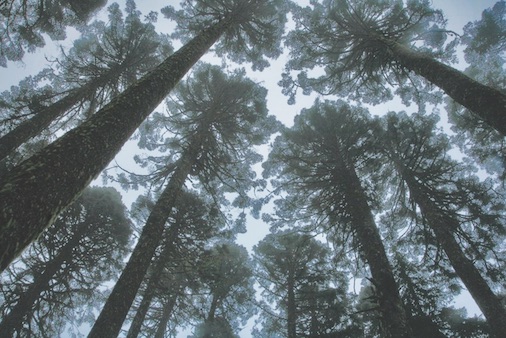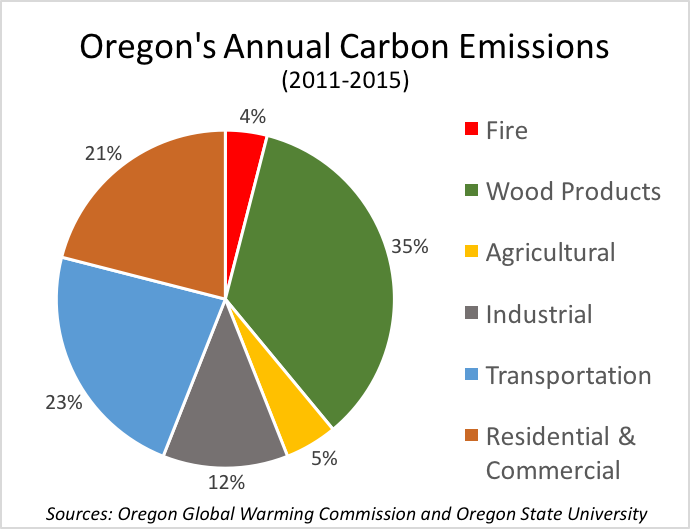
Forests are among the largest stores of living carbon on the planet, and it turns out that the forests of western Oregon have a higher carbon density than almost any other forest type in the world. Unfortunately, the destruction and mismanagement of these forests over the past century has transferred massive amounts of stored carbon to the atmosphere, which has contributed significantly to the warming of the planet. We can’t change the past, but the policy choices we make today will either continue to make forests a part of the climate problem, or ensure that they are part of the solution.
How do trees store carbon?
Carbon is one of the building blocks of life. As forests grow, trees intake carbon from the atmosphere to build living structures and store it in their trunks, bark, branches, and extensive root networks. This natural process, known as “carbon sequestration,” converts carbon dioxide from its gaseous state into a solid that remains safely stored for long periods of time.
Oregon’s oldest forests are particularly good at capturing and storing carbon, and they continue to absorb carbon even after tree growth appears to have slowed. The logging industry has falsely claimed that fast-growing young forests are better at absorbing carbon; however, research shows that old forests store far more carbon. Logging older trees and replacing them with younger ones emits tremendous amounts of CO2 and creates a “carbon debt” that takes many decades or centuries to repay.
How significant are emissions from wildfire?

Despite their impressive smoke plumes, Oregon’s wildfires are not major sources of carbon emissions. Researchers with Oregon State University have estimated that between 2011–2015, forest fires only accounted for 4% of Oregon's total carbon emissions each year, whereas logging accounted for roughly 35%. In fact, forests hold on to the majority of their stored carbon even after severe wildfires, as long as the standing dead trees (snags) are not targeted by so-called “salvage” logging. The reality is that wildfire has always been an essential and unavoidable element in our forest ecosystems, so eliminating emissions from these fires is both unattainable and ecologically harmful. Instead, we must focus our efforts on anthropogenic carbon emissions such as clearcut logging and rampant fossil fuel use, which are the actual causes of climate change.
Logging: Oregon’s biggest climate polluter
Unfortunately, a century of industrial logging practices has eliminated most of Oregon’s original old-growth forests and disrupted this natural carbon cycle. Logging kills trees, stops them from growing, and accelerates the transfer of carbon from the forest to the atmosphere. Our carbon-intensive logging practices make the timber industry Oregon’s largest source of global warming emissions.
To understand where all this carbon comes from, you need to look at the entire lifecycle of wood products. When a forest is clearcut, the branches, tree tops, and other logging residue left behind is usually burned or left to decompose. This process quickly releases large amounts of carbon that would have otherwise remained stored in the forest for many more years. There are also significant carbon emissions from the fossil fuels burned by logging equipment and log trucks. Once logs reach a mill, even more carbon is lost as the wood is processed and cut into two by fours and lumber. By the time wood products reach their end destination, only a fraction of the original carbon from the forest remains.
On top of all these emissions, logging destroys the living machinery that removes carbon from the atmosphere. The forest eventually regrows, but there is a significant pause in the forest’s natural capacity to capture and store carbon, which further exacerbates climate change.

